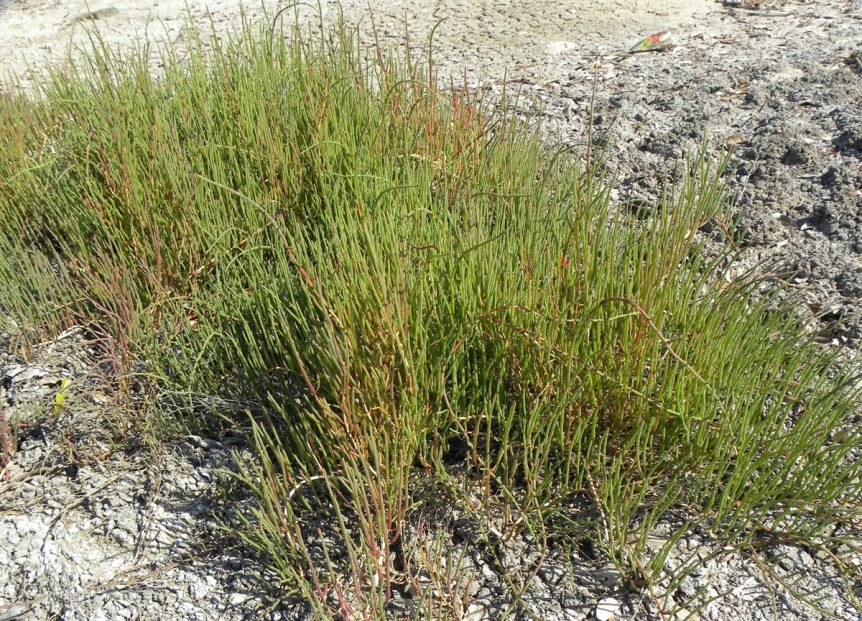Ethiad Airways made the first commercial flight on fuel made from plants grown in saltwater by Khalifa University. Burning jet fuel made from halophyte plants grown in salt water and fertilized by the shrimp and fish living in the salt water enabled a flight from Abu Dhabi to Amsterdam on January 16. It was the first flight on pure biofuels, even though commercial airlines have made over 160,000 flights on blended fuels since 2011. Dennis Bushnell Predicted This Chief Scientist at NASA Langley Dennis Bushnell shared information on halophytes, plants that grow in salt water. He presented such ideas at a symposium your editor attended six years ago, and his vision is now being realized. He points out that 70 percent of all water in the world has a high saline content and over 40 percent of all lands are arid and cannot sustain conventional agriculture. You can see a slide show of his presentation on halophytes here. An Encompassing …
Desert + Salt Water = Jet Fuel
Masdar, the United Arab Emirate’s clean energy development program, is hosting Solar Impulse as it prepares for its around-the-world flight. Beyond that, Masdar comprises five business units: Masdar Capital, Masdar Clean Energy, Special Projects, Masdar City and Free Zone, and Masdar Institute, “an independent, research-driven graduate university. Masdar Institute of Science and Technology is a multi-faceted research center, which although small at this time, seems to be fairly prodigious in the output of patents, patents pending and academic papers. The Institute heads a program to use “coastal seawater to raise fish and shrimp for food, whose nutrient-rich wastewater then fertilizes oil-rich halophyte plants that can be harvested for aviation biofuel production.” Halophytes, as those who’ve listened to or read Dennis Bushnell’s comments will know, thrive in harsh conditions including a diet of saltwater. Working with a consortium including Masdar, Etihad Airways, Boeing and Honeywell UOP, and later joined by aerospace companies Safran and GE, Masdar Institute’s initial laboratory-scale demonstrations could …
Big Birds Flying Green Economy Class (Part Two): Inspire and Aspire
Strategy was almost as important as design in the recent Green Flight Challenge, with near flawless planning and execution of carefully-crafted flight paths by the winning teams. This same precision and use of resources will become more important in a future constrained by increasingly precious fuels. According to Greenaironline.com, “The Indian Ocean Strategic Partnership to Reduce Emissions (Inspire) partnership achieved fuel savings of 3,482kilograms (29,723lb) and carbon dioxide savings of 42,469kg on five flights operated between Australia and the Middle East and South Africa.” These green demonstration flights, according to Greenair, show, “what is what is possible when air navigation service providers (ANSP), airlines and airports work together to remove operational constraints.” Begun in 2010 to “develop gate-to-gate procedures, practice and services” with the goal of reducing fuel use and emissions “across all phases of flight,” Inspire follows Aspire – the Asia and Pacific Initiative to Reduce Emissions – established in February 2008 by Airservices Australia, Airways New Zealand and the U. …

